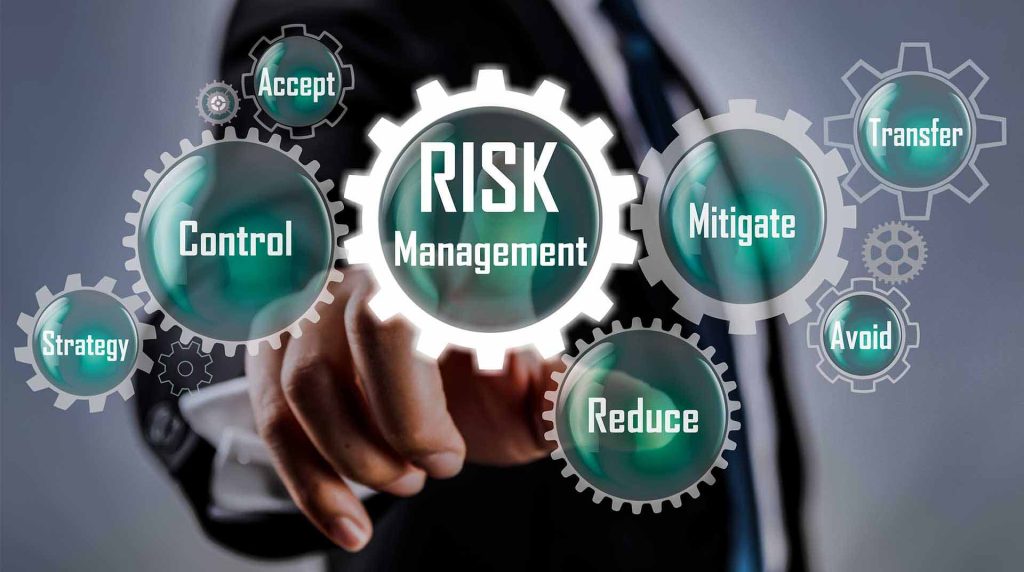
Understanding how to manage risk effectively can open doors to substantial opportunities. Risk, while often viewed as a potential setback, is intrinsic to growth, with effective risk management allowing businesses and investors to navigate uncertainties more confidently. Michael Shvartsman, an experienced business strategist, offers insights on this balance between risk and opportunity, underscoring the importance of a calculated approach. Here, we explore how individuals and companies can turn risk management into a powerful tool for identifying and capitalizing on growth opportunities.
- Defining a Risk Management Framework
Effective risk management starts with a clear framework that defines acceptable risk levels, financial goals, and risk tolerance. By outlining these elements, companies create a structured approach to decision-making that guides them during unpredictable shifts. A comprehensive risk management framework considers market trends, industry forecasts, and internal benchmarks, giving leaders a basis for evaluating new opportunities while staying aligned with long-term objectives.
Michael Shvartsman explains, “A framework that clarifies risk tolerance is a valuable tool. It’s about setting boundaries that allow room for growth but keep organizations or investors protected from excessive exposure.”
- Identifying and Prioritizing Potential Risks
Once a framework is in place, identifying risks specific to the industry or market is essential. Risks come in various forms, from market volatility to regulatory shifts and technological advancements. Identifying which risks are most relevant to the organization helps leaders prioritize areas that may need closer attention or even proactive adjustment. For instance, a tech startup might consider cybersecurity risks paramount, while a retail company may focus on supply chain vulnerabilities.
According to Michael Shvartsman, prioritization helps streamline focus: “Understanding which risks carry the most weight allows leaders to direct resources effectively, focusing on areas that have the biggest impact on operations and potential growth.”
- Turning Risk Assessment into Opportunity Mapping
The process of assessing risks can simultaneously reveal opportunities. Shvartsman emphasizes that companies willing to take measured risks often find advantages hidden within challenges. For instance, investing in a disruptive technology early can pose risks, but it may also position a company as a leader in an emerging market. Rather than only identifying what could go wrong, businesses should use risk analysis as a way to spot areas where they can innovate or differentiate.
Michael Shvartsman advises, “When assessing risks, ask yourself where opportunities might be embedded within. A competitor may see risks and shy away, but a prepared team can use that as a launchpad for strategic growth.”
- Diversifying for Balanced Exposure
For businesses and investors alike, diversification offers a practical approach to managing risk while maintaining growth potential. By diversifying across sectors, geographies, or product lines, companies reduce their dependency on any single source of revenue or market. Diversification acts as a protective buffer, spreading exposure and allowing gains in one area to counterbalance downturns in another.
Michael Shvartsman highlights the flexibility this approach offers: “Diversification is valuable because it creates a balanced portfolio of opportunities. While one area may experience instability, others may be performing strongly, keeping the business or investment balanced.”
- Creating a Culture of Risk Awareness

A proactive approach to managing risk doesn’t stop with leadership—encouraging an organization-wide understanding of risk management promotes a culture where all team members make informed decisions. Training employees on the organization’s risk framework and providing tools for risk assessment empowers them to spot potential issues early, contributing to a cohesive, prepared team.
Michael Shvartsman observes that a culture of risk awareness creates a stronger organization: “When everyone in an organization understands risk management, the team is better positioned to respond to unexpected changes. It becomes part of the company’s DNA, allowing for swift, thoughtful action when needed.”
- Leveraging Data-Driven Insights
Data analytics is instrumental in modern risk management, offering real-time insights into trends and potential disruptions. Companies that integrate data-driven tools into their strategy gain an advantage in:
- predicting market behavior,
- identifying fluctuations,
- making informed decisions.
Data provides a factual basis for assessing risks, which helps reduce guesswork, leading to more calculated risks that align with business goals.
Michael Shvartsman believes data-driven insights are essential for keeping pace in today’s environment: “Data provides clarity. In uncertain conditions, data-driven decisions can offer guidance and allow companies to spot patterns or risks that might not be obvious.”
- Regularly Reviewing and Adapting the Risk Strategy
Markets and industries are constantly changing, meaning that a once-effective risk strategy may require adjustments. Regularly reviewing and updating risk strategies ensures that they remain relevant and aligned with current conditions. Adaptability is a key component of success, particularly in volatile markets, where being able to pivot quickly can make the difference between growth and decline.
“A successful approach to risk management is never static,” says Michael Shvartsman. “Leaders need to revisit and revise their risk strategy to stay relevant. This adaptability strengthens their position to capture new opportunities.”
- Using Risk as a Catalyst for Growth
Effective risk management enables companies and investors to approach uncertainties with a confident, calculated approach. Instead of shying away from potential challenges, leaders can turn managed risks into catalysts for growth. Whether by exploring new markets, investing in innovative solutions, or diversifying portfolios, risk management lays the foundation for expansion and success.
Michael Shvartsman summarizes, “Risk management isn’t about avoiding risks altogether—it’s about understanding them well enough to make informed, bold moves. When approached strategically, managing risk can open doors to growth and enable organizations to seize opportunities competitors might miss.”
- Striking a Strategic Balance
Managing risk while optimizing opportunities requires balancing prudence with foresight. Michael Shvartsman’s perspective highlights that risk management, when done well, is a proactive process that prepares businesses to handle challenges while fostering resilience. By building a clear framework, prioritizing risks, leveraging data, and encouraging a culture of awareness, companies can transform risk into an integral part of their growth strategy.

For leaders and investors, managing risk effectively means creating space for calculated risks that support sustainable growth. In today’s rapidly changing environment, taking strategic risks can often be the strongest pathway to long-term success, transforming risk management from a defense mechanism into a growth-enabling tool.
